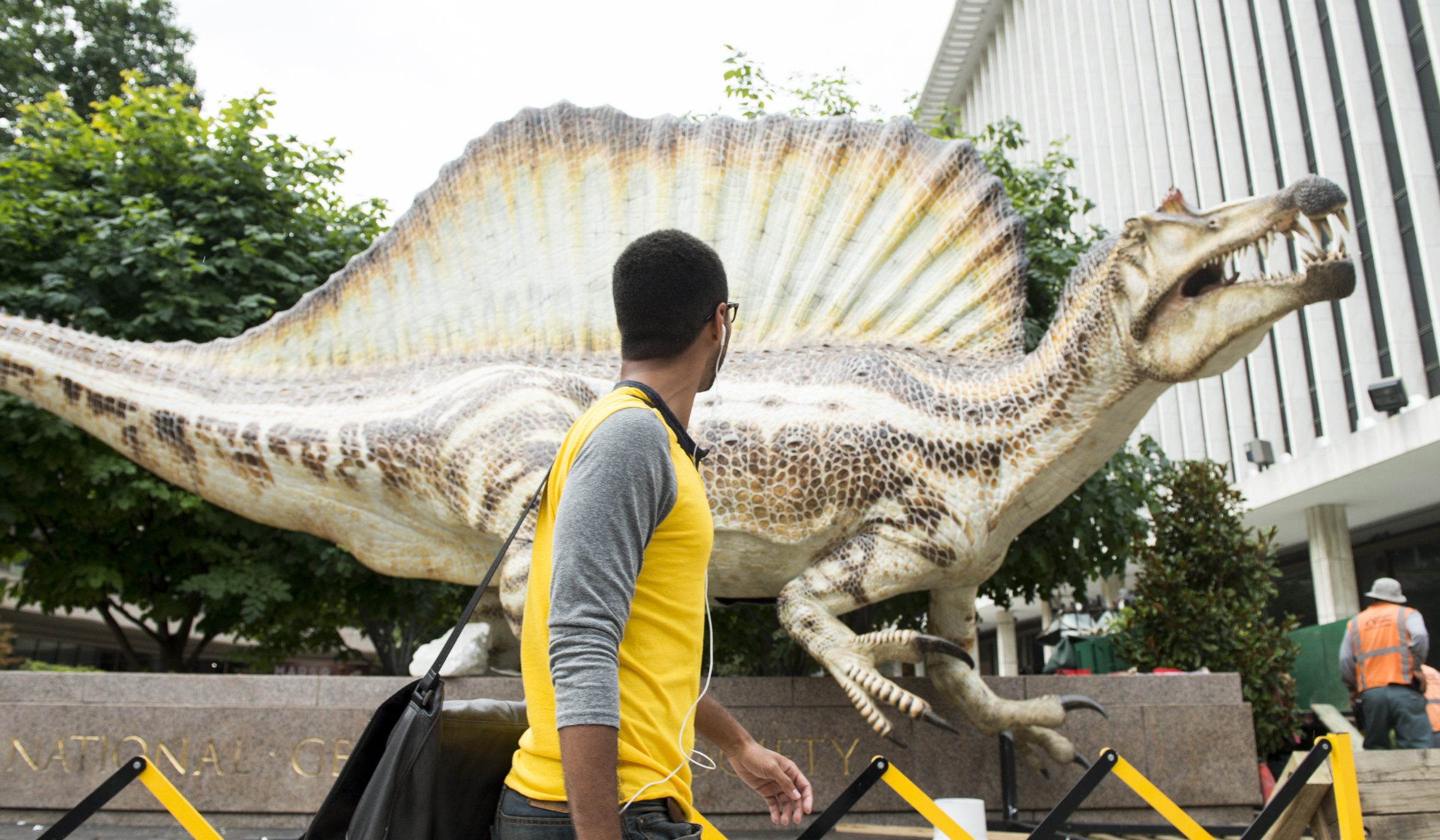
Most of North Africa is no more than a sun-scorched desert today, but 95 million years ago the landscape was crisscrossed by rivers, dotted with marshes and populated with all sorts of reptilian monsters. The German paleontologist Ernst Stromer stumbled on this lost world back in 1912. Among the fossils he brought back to Munich were a few bones from a strange-looking predator he called Spinosaurus aegyptiacus—notably a long, thin jawbone studded with sharp teeth and a backbone festooned with enormous spines. The animal was clearly a predator, and the bones were so huge that this new creature could, he thought, be even bigger than T. Rex.
Unfortunately, most of Stromer’s fossil collection was destroyed in an Allied bombing raid during World War II, leaving just his drawings and descriptions. That record has obsessed University of Chicago paleontologist Nizar Ibrahim since he read about them as a child, and, says Nizar, “I always wanted to go back to do the same thing Stromer did a century ago.”
A few years ago, he did. The results have just appeared in a new report in Science. And it turns out that Spinosaurus was even stranger than Stromer realized. “There are so many ways it was unusual,” says Ibrahim, “that it’s hard to come up with my top three favorites.” At nearly 50 ft. long, he says the creature was in fact bigger than T. Rex—the biggest predatory dinosaur ever found, by about nine feet. “It had a long snout like a crocodile,” he says. “It had a big sail on its back.”
And perhaps most important from a scientific perspective, Spinosaurus is the first swimming dinosaur ever discovered (ichthyosaurs weren’t dinosaurs, so they don’t count). “It had relatively puny hind legs,” says Ibrahim’s University of Chicago colleague Paul Sereno, who co-authored the new paper, “with wide feet and flat claws that are ideal for paddling.”
Its tail, unlike that of T. Rex, was flexible, which would have helped propel it through the water, and its nostrils were high up on its head, allowing it to breathe as it searched for its underwater prey—freshwater sharks, among other things. “The skull,” says Ibrahim, “resembles the skull of fish-eating crocodiles, and the tip of the snout, with its slanted, interlocking teeth, is like a fish-catching trap.” The sail—the biggest ever found on a dinosaur—was almost certainly used to attract females, since it didn’t have a rich system of blood vessels that would have marked it as an adaptation for getting rid of excess heat. For that reason, says, Sereno, “It was probably brightly colored.”
If Spinosaurus is the biggest, weirdest predatory dino ever found, and the tale of its discovery a mystery story lasting nearly a century, the way it was reconstructed was almost equally unusual: the scientists digitized Stromer’s old drawings of the bones he’d found, digitized images of the bones they’d found, and merged them with a computer to figure out what the whole creature must have looked like—a process you’ll see, along with the story of Spinosaurus’ discovery and rediscovery, on a National Geographic/NOVA special airing on PBS on Nov. 5 at 9 p.m. You can see Spinosaurus itself, meanwhile, at the National Geographic Museum in Washington, D.C., starting September 12.
And if Spinosaurus itself isn’t strange enough to grab you, there’s plenty more to come. “We’ve collected an entire menagerie of strange predators,” says “Ibrahim, “and we’ll be publishing more papers. I’m interested in Spinosaurus, but also in the world it lived in. Spinosaurus had bizarre adaptations,” he says, “but they make sense once you understand the bizarre river system it ruled.”
More Must-Reads from TIME
- Why Trump’s Message Worked on Latino Men
- What Trump’s Win Could Mean for Housing
- The 100 Must-Read Books of 2024
- Sleep Doctors Share the 1 Tip That’s Changed Their Lives
- Column: Let’s Bring Back Romance
- What It’s Like to Have Long COVID As a Kid
- FX’s Say Nothing Is the Must-Watch Political Thriller of 2024
- Merle Bombardieri Is Helping People Make the Baby Decision
Contact us at letters@time.com